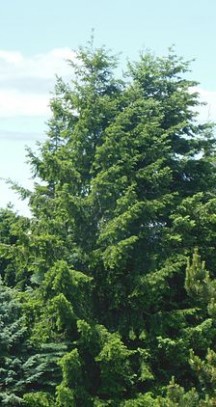The other day I wrote a blog on Pine Trees, How to Eat One. In the article, I discuss making tea from pine needles. This is a tea that is heavy with vitamin C and the pine has other uses as well.
One thing that was pointed out was that certain types of pine tree (Ponderosa, Norfolk Island and Yew) have some toxic properties and you should not make tea from them. As a result of this article, I received emails asking about other types of trees and if you could make tree teas from their needles or leaves.
So here is the scoop on tree teas.
There are quite a few trees that make good, healthy tree teas. However, there are some that I question their safety. The tree teas mentioned here are considered safe under most circumstances, with the exception of the cedars. One word of warning: most of these trees should not be consumed by pregnant women since they may cause abortions under some conditions. Anyone who shows an allergic reaction should discontinue them.
Spruce trees. You can make spruce tea year-round, but the needles you use will affect the taste of the tea. The young, light green spruce tips will yield a light, slightly lemony flavor. The older needles will have a slightly bitter taste. When harvesting needles always try to pick the ones that are the lightest green because they will be the freshest.
Tamarack. I have included tamaracks here even though they are members of the pine family. The reason is that they are the only conifer tree to lose their needles in the winter. Since they have no needles during the late fall and winter, you can use bits of bark and twigs for your tea. Tamarack is full of vitamin C and has a earthy flavor.
Hemlock. You’ll use the tree, not the poisonous plant. Chop hemlock needles into inch-long pieces. Pour boiling water over the needles, let steep for several minutes, strain out the needles and drink warm. This makes a good tasting tree tea.
Birch. Birch trees make a fragrant tea that has a subtle wintergreen flavor and tastes great with a bit of sweetening. The tea is made from the twig-tips, and sometimes the pinkish inner bark. To make the tea, take several of the small twigs from the ends of the branches and crush or cut them up. Now pour boiling water over them and allow them to steep.

Douglas fir. This needle tea gives what some people think is the best tasting of the tree teas. The tree yield a excellent tea, high in vitamin C. The resin from the blisters on the tree trunks yield an antiseptic that works great to seal small cuts.
The last tree that we will discuss is one I would probably avoid except under extreme circumstances and that is cedar. Although it has been used in many areas as a tea and is high in vitamin C, it has some toxic properties. Native Americans used this as a medicine and advise against drinking this as a beverage. It contains cedar oil which has toxic properties. The cedar oil makes a scummy sheen on the surface of the tea. Some authorities state that you can make the tea safe by pouring this off. Personally, I think there are many other trees that can be used to make tea and I will avoid cedars.
As with all plants and trees be sure you have identified them correctly prior to consuming them. If you aren’t familiar with the trees growing around you, use a reliable reference guide, like this one.
Howard


Thanks Howard for this info.
It’s good to know that I can use the needles from my Douglas Fir trees for a vitamin C tea but not my ponderosa pine or cedar trees.
Hangtown Frank
Hey Howard, Good job for this article, and insight on the healthy Vitamin C rich teas from these pine trees. Will definitely try one soon and post my feedback to you.